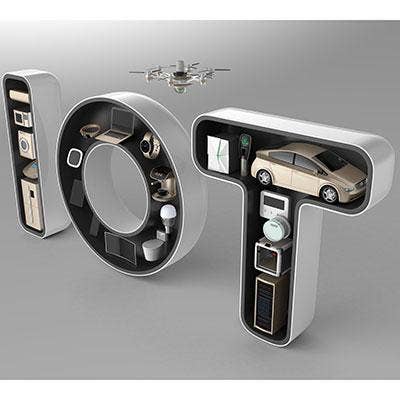10 IoT Predictions For 2018

IoT Predictions For The New Year
As solution providers head into the new year, the Internet of Things continues to be top of mind for both customers and vendors.
According to a report by market research firm IDC, worldwide spending on the Internet of Things overall will reach $772 billion in 2018 – and solution providers hope to profit from the IoT goldmine going into the new year. Following are the top 10 IoT predictions for 2018.

Manufacturing IoT Spend Will Be Huge
The manufacturing vertical is expected to spend the most on the Internet of Things in 2018, according to a new report by research firm IDC – and solution providers are looking to cash in.
According to IDC’s report, manufacturing companies globally will spend up to $189 billion on IoT solutions. IoT spending among manufacturers will be focused mainly on solutions that support manufacturing operations and production asset management, according to IDC.

Operational Technology Security Will Be A Top Focus – And Risk
As IoT solutions become more popular in the manufacturing segment, the security risks will also rise – and that issue will become a critical challenge for customers in 2018.
Customers in the industrial segment – including manufacturers – will become increasingly concerned with the security of their industrial control systems, SCADA systems, and operational technology as they are connected to the network. For solution providers, however, this will introduce new opportunities to utilize their security expertise.
"When I think about the risks for IoT, the risks are centered around operational technology types of systems," said Jon Connet, Senior Director of Corporate Strategy at Forescout. "The reason for that is that there's so much value tied into these systems, but they were never designed to be connected. When you look at the WannaCry and Petya malware attacks, these had a material impact on OT systems to the point where large multinational companies were materially impacted."

Concerns Around Consumer IoT Security
Security vulnerabilities in IoT devices were underscored in late 2016 when a DDoS attack – which was launched through IoT devices including webcams, routers and video recorders – overwhelmed servers at Dynamic Network Services, taking down up to 1,200 websites. Moving into 2018, IoT security of consumer devices remains a big concern for customers – according to information service provider Neustar, the frequency of DDoS attacks increased in 2016 due in part to IoT botnets. The Sterling, Va.-based company said it mitigated 40 percent more DDoS attacks from January through November compared with the same span last year. The channel, for its part, plays a critical role in educating customers of the security risks inherent in deploying Internet of Things devices, especially as DDoS attacks continually evolve.

Vendors Will Tighten Focus On Vertical Markets
Industries other than manufacturing are expected to shell out money around IoT solutions. This includes transportation, which is expected to spend $85 billion, and utilities, which is expected to spend $73 billion, according to IDC.
To keep up with these niche markets, vendors will tighten their vertical market focus – through tapping into partners with domain knowledge and critical customer relationships.
"Customers and vendors are looking to the channel to be a trusted advisor," said Forescout's Connet.

More Consolidation In The IoT Market
Throughout 2017, vendors have been aggressively building up their Internet of Things capabilities by acquiring analytics, connectivity, and operational technology security startups. Meanwhile, bigger vendors have been pushing into the connected car space by adding startups with infotainment systems and cybersecurity capabilities to their wish lists. The year was led off by two blockbuster connected car acquisitions in March – Intel's $15 billion purchase of Mobileye and Samsung's $8 billion purchase of Harman.
Looking forward to 2018, these acquisitions are expected to continue as vendors continue to roll out their IoT businesses.

Vendors Will Look For OT Partners
As vendors realize just how lucrative the manufacturing space, they will be reaching out to channel partners with expertise in operational technology – including those with close ties to GE, Rockwell Automation and Siemens. In the coming year, IT solution providers and vendors will need to begin to work more closely with the operational technology side of the manufacturing floor.
This is the strategy that Cisco has already taken – the IT company has looked to drive invaluable sales in industrial space by linking up with Rockwell Automation and using that company's channel partners. In 2018, more companies will follow this path.

More IoT Startups
More IoT will emerge in the Internet of Things market in 2018. These startups are building their practices around keeping up with networking, analytics and security challenges and opportunities as more devices come online. And luckily for the channel, many of these startups will realize that they need the vertical market expertise and customer relationships that partners on the front lines have, and are actively looking to build up channel programs.

Bigger Focus On Interoperability
One major issue that Internet of Things devices are facing is interoperability. The IoT market came together as many manufacturers made their devices based on some protocols, such as Wi-Fi, Thread, and Bluetooth, but not others. In the coming year, manufacturers will make a more significant effort to standardize their IoT solutions hardware, software around critical protocols.

Vendors Will Continue Fleshing Out Channel Programs Around IoT
In 2017, vendors started to flesh out their channel strategies for IoT as they realized that IoT essentially requires an ecosystem play.
For instance, Dell Technologies in October introduced a new division focused on the development of Internet of Things products as well as a new IoT partner program as the market for edge computing continues to heat up. In 2018, more vendors will follow Dell's footsteps and ramp up their efforts around channel programs and IoT.

Edge Analytics Solutions Will Increase
As more customers adopt Internet of Things applications, solution providers say edge computing applications – where data is processed and analyzed at the end device level – will become more prevalent in 2018. In edge computing, sensors and other connected devices collect and analyze the data locally, alleviating the dependence on cloud or internet connectivity in specific situations where information needs to be processed quickly, reliably and securely. Customers are recognizing the business benefits of bringing that intelligence closer to the end customer, and they are spending accordingly. Market research firm IDC predicted that by 2019 at least 40 percent of IoT-created data would be stored, processed, analyzed and acted upon close to, or at, the edge of the network.